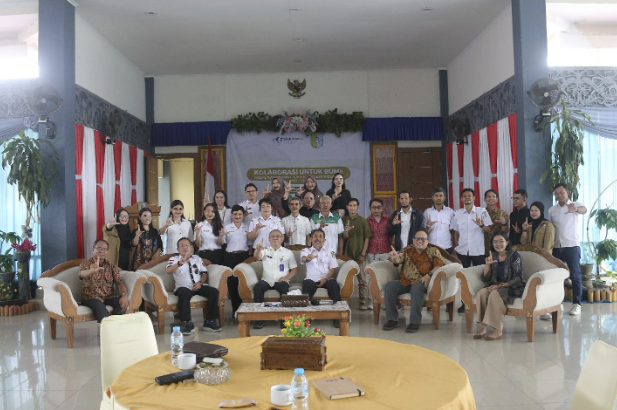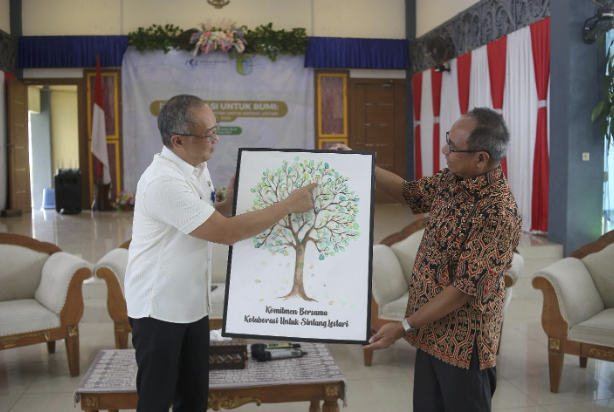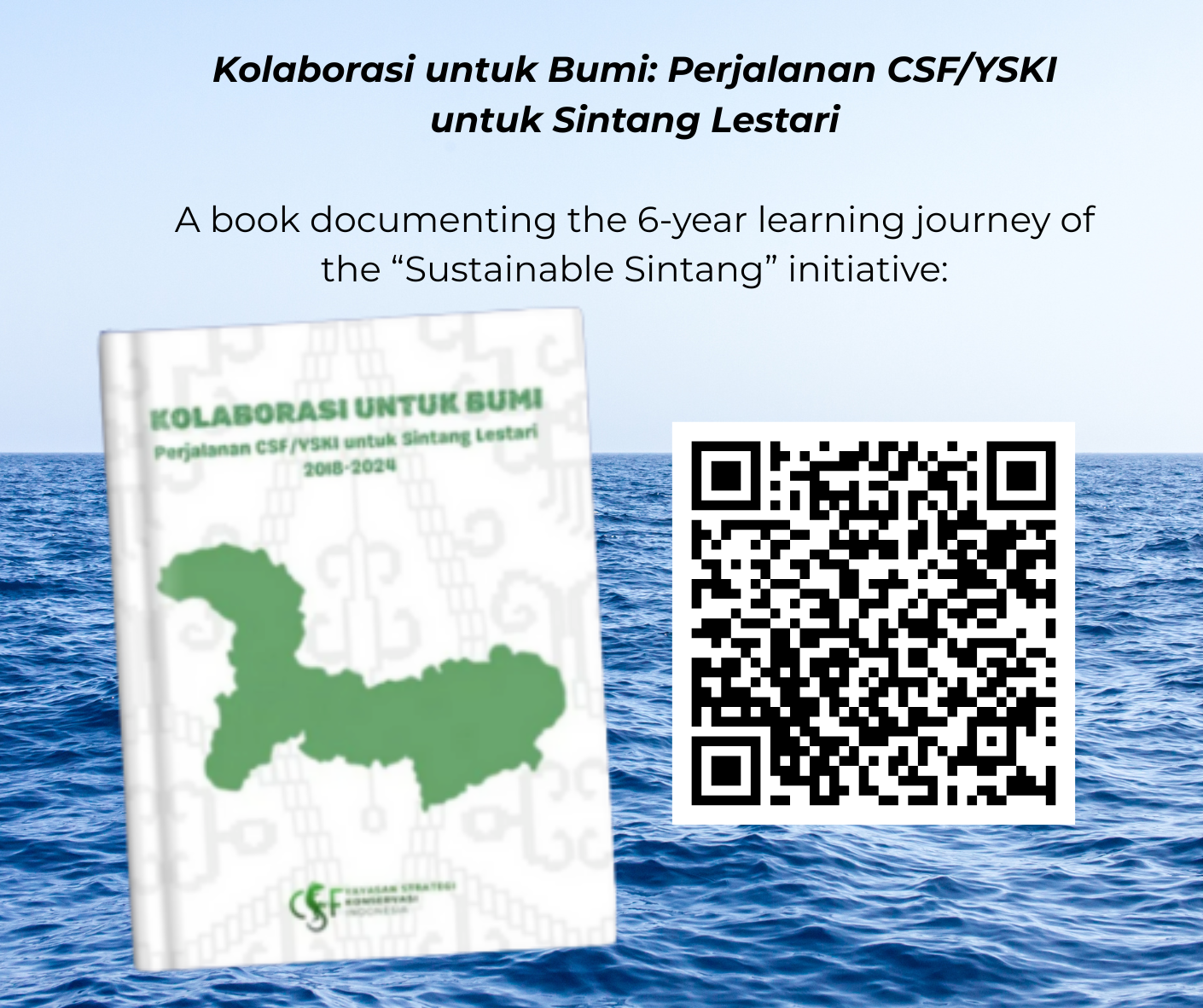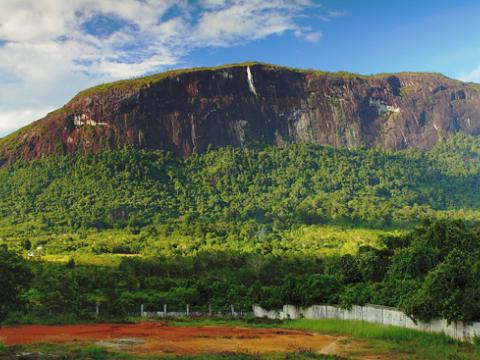The Journey Towards a Sustainable Sintang: A Story of Collaboration and Mindset Shift
Background: A Region of Rich Resources and Deep Traditions
Located in West Kalimantan, Sintang Regency spans approximately 21,000 square kilometers and is home to over 438,000 people. It holds significant natural assets: 1.3 million hectares of forest, rich biodiversity in national parks, and abundant freshwater systems, including rivers and lakes that sustain traditional livelihoods. The region is also culturally rich, with communities like the Dayak and Malay maintaining strong spiritual and practical ties to the land.
Yet, the pressures of development, from palm oil expansion, infrastructure growth, and environmental degradation, have challenged Sintang’s ecosystems and traditional ways of life. Recognizing the urgent need to align economic progress with ecological sustainability, Sintang’s leadership declared their vision to become Sintang Lestari, a sustainable regency, beginning in 2016.
To support this ambitious transition, CSF Indonesia (Yayasan Strategi Konservasi Indonesia or YSKI) began working in Sintang in 2018, under the umbrella of Lingkar Temu Kabupaten Lestari (LTKL), a collective of district governments committed to sustainable development.

The Three Phases of YSKI’s Work in Sintang
With financial support from The David and Lucile Packard Foundation, for over six years, YSKI’s engagement with Sintang unfolded in three distinct but interconnected phases, each deepening stakeholder commitment and capacity.
Phase 1: Strengthening the Foundation (2018–2019)
This phase focused on building a shared understanding and setting the direction for Sintang Lestari. Through a series of multistakeholder dialogues, YSKI facilitated the co-creation of a unified vision for the district’s sustainable future. A comprehensive baseline study examined four key dimensions: local history and culture, economic development, natural resources, and land governance.
YSKI then conducted trainings and workshops on sustainable development, integrated landscape policy, and scenario planning. These efforts culminated in a strategic planning process involving 60 stakeholders from government, civil society, academia, and Indigenous communities. The result was a roadmap and long-term vision for Sintang Lestari 2030, formalized in Peraturan Bupati No. 66/2019, the Regional Action Plan for Sustainable Development (RAD-SL). This plan later informed the 2021–2026 Regional Mid-Term Development Plan (RPJMD).
This foundational phase was essential in shifting institutional perspectives—particularly in demonstrating how ecological preservation can and should go hand-in-hand with economic growth. Many civil servants, who had previously viewed environmental protection as separate from development, began integrating sustainability into their strategic thinking.
Phase 2: Strengthening Commitment and Local Capacity (2019–2021)
With the RAD-SL in place, YSKI focused on equipping local actors with the knowledge and skills needed to implement it. Targeted trainings were delivered to government planning agencies (particularly Bappeda), civil society groups, Indigenous leaders, and business associations. Topics included sustainable development indicators, Green GDP, carbon accounting, and Strategic Environmental Assessment (KLHS).
YSKI also facilitated dialogues to embed the Sintang Lestari vision into sectoral programs and budgeting processes. A key milestone was aligning the RAD-SL with the next iteration of the RPJMD. Inclusive public consultations ensured broad participation, while policy and fiscal diagnostics helped stakeholders assess the effectiveness of public spending and investment strategies.
Studies such as the Growth Diagnostic and the Public Revenue and Expenditure Review provided evidence-based input to strategic documents, including the General Investment Plan (RUPM). These efforts not only built technical capacity but also fostered trust between local government and non-state actors—strengthening the foundations for collaborative governance.
Phase 3: Strengthening Strategic Sectors (2022–2024)
The final phase focused on bringing the Sintang Lestari vision to life in key sectors—particularly infrastructure, freshwater fisheries, and food security. YSKI supported the revision of spatial planning documents (RTRW) and conducted KLHS for new development zones. Training in landscape modeling helped visualize trade-offs and guide decisions under different development scenarios.
One standout initiative was the Green Budget Tagging (GBT) study, which assessed the alignment between budget allocations and sustainability goals. In 2021, Sintang allocated Rp 509.9 billion to green development, with nearly 90% of those funds realized. Although this figure decreased in 2022 due to reduced national transfers, the study underscored the importance of sustaining green investments, including those from NGOs and corporate partners.
YSKI also advanced the sustainable freshwater fisheries program, aligning spatial and sectoral planning with the Sintang Lestari vision. Training on smart infrastructure planning helped decision-makers understand the environmental trade-offs associated with development projects. This phase emphasizes the use of economic tools and environmental valuation to support better policymaking, which is central to CSF/YSKI’s mission.
Final Reflections: Collaboration and Mindset Change as Cornerstones of Sustainability
YSKI’s journey in Sintang demonstrates that sustainable development is not just about new policies or budgets. It’s about changing mindsets and building a culture of collaboration. For six years, YSKI helped transform the way local stakeholders, including civil servants, CSOs, and indigenous leaders, viewed the relationship between nature, the economy, and wellbeing.
By combining rigorous economic analysis with participatory planning and capacity-building, YSKI contributed to a deeper, more inclusive understanding of what it means for a district to be leastari, or sustainable. The collaborative platforms, data-driven tools, and strategic documents created are not only products, but also enablers of systemic change.
Sintang’s story serves as a model for other regions, demonstrating how multi-stakeholder partnerships, grounded in local values and strengthened by technical expertise, can drive a holistic development agenda. As the district moves forward, the foundation laid through this collaboration will be crucial to sustaining progress, both for people and the planet.
YSKI’s work in Sintang has been formally recognized through multiple awards from the Sintang District Government. The most recent honors were in two categories: Good Governance and Research & Development.

Kolaborasi untuk Bumi: Celebrating a Shared Journey
To commemorate and share insights from this six-year journey, CSF hosted the event "Kolaborasi untuk Bumi: CSF/YSKI's Journey for Sustainable Sintang" on December 11, 2024. The event translated into English “Collaboration for the Earth” aimed to foster dialogue and collaboration on sustainable development in Sintang and beyond. It was a pivotal moment to celebrate collaborative achievements, ensure the continuity of past initiatives, and honor stakeholders and partners who have contributed to achieving Sustainable Sintang.
__
Ready to Learn More?

- Log in to post comments

